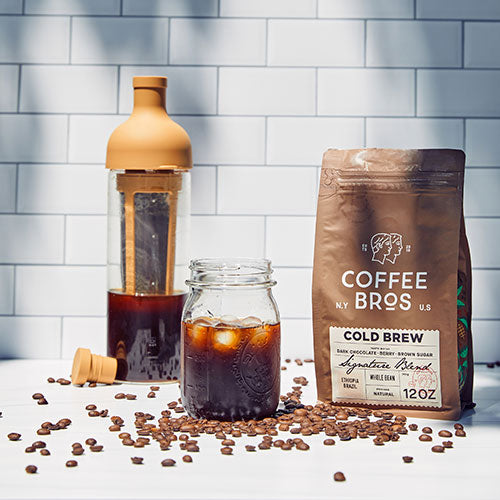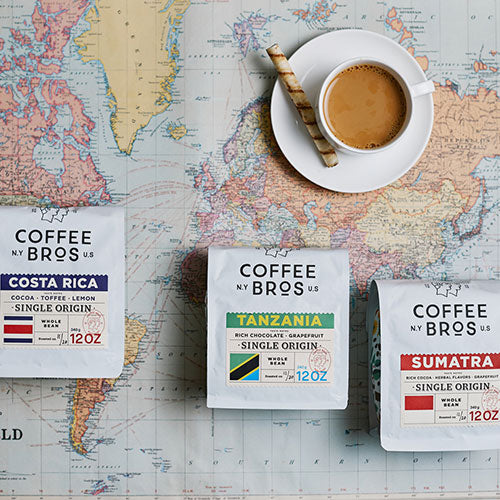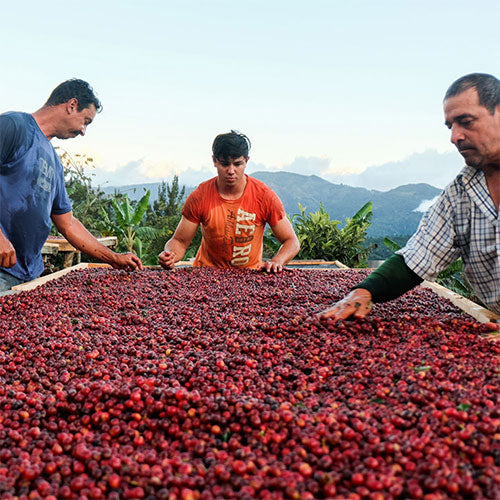November 14th, 2022
Top 10 Coffee Brewing Tips: Brew The Best Cup of Coffee
The Top 10 Brewing Tips
- Brew with freshly roasted coffee
- Buy specialty coffee from a local supplier
- Understand how processing methods impact coffee taste notes
- Use the correct coffee grinder for the job
- Understand grind size and adjustments
- Measure your coffee with a scale
- Brew with good water
- Time your brews
- Understand coffee brewing temperatures
- Clean your equipment
Coffee Subscription Deal
Subscribe to Coffee Bros. coffee for 25% off when using code "FTSUB25" at checkout
Always brew with freshly roasted coffee:
Always brew freshly roasted whole-bean coffee and grind on demand. The optimal timeframe to brew and enjoy your coffee is 7 – 30 days past the roast date.
Buy specialty coffee from a local supplier:
Buying specialty coffee from a local supplier can make all the difference when trying to brew that perfect cup of coffee. An excellent roaster will detail everything about the coffee, from the origin, processing type, roast color/depth, varietal, and taste notes.
Find a roaster that puts every coffee they purchase through the paces before offering it to their customer base. You will know this immediately because a great roaster can tell the story of the coffee from the farm to the roastery.
Understand how processing methods impact coffee taste notes:
The process of the coffee (Natural, Washed, Honeyed, etc.) loosely defines how the coffee was processed post-harvest. The post-harvest process has a great deal of impact on potential taste attributes and the quality of the finished product. While great-tasting coffee has come from every type of process, you will learn that specific processes may have flavor profiles more in line with your palette.
Many of the highest-scoring coffees in recent Cup of Excellence auctions are processed using anaerobic fermentation (dry fermentation), a technique taken from the wine industry. Coffee producers leverage this technique to impart unique flavor and aromatics into their coffees.
Use the correct coffee grinder for the job:
Ensure you are working with a coffee grinder built for the brewing you intend to do. There is a big difference between a coffee grinder meant for drip coffee versus one for espresso. Always look for a grinder with good burrs, flat or conical; we like the Fellow Ode Coffee Grinder for Filter Coffee.
Understand grind size and adjustments:
We often see poorly extracted coffee in videos across social media and only imagine the same thing happening to most individuals. The particle size of your coffee plays a significant role in proper extraction and the timing of your brew. You must reevaluate your grind size when your espresso is pouring out of your portafilter like a waterfall.
Measure your coffee with a scale:
Gone are the days when relying on "scoops" as a measuring guide was commonplace. Use a proper coffee scale, as coffee weight drastically changes by roast type/color. Getting your coffee weight right each time allows consistent input across your brew methods.
Brew with good water:
Water represents 99% of the liquid in your cup and should be carefully selected when brewing your coffee. While tap water is clean in some areas, it should not be used when brewing coffee or put through machines without proper filtration. Tap water is typically quite hard, damaging machines and leaving your coffee tasting dull.
Good water needs balanced hardness and alkalinity to help brew the perfect cup of coffee. Like tap water from Los Angeles, water with high alkalinity will have a bland and flat taste in your cup. Like the water in Boston, water with low hardness and alkalinity will leave your coffee tasting weak and sour.
So how do you get it right? You can research local municipalities' water ratios, purchase good bottled water (within the suggested range of hardness and alkalinity), or optimize distilled water with Third Wave Water's mineral packs.
Time your brews:
Timing your coffee brews will only lead to more consistent and flavorful cups of coffee. If a recipe calls for a 3-minute brew and it takes you over 4 minutes to complete it, this tells you that you might have your grind size wrong. If you do not time your brews, it will be tough to properly adjust your grind size or brewing techniques to hit your intended times.
Know your brewing temperatures:
Temperature refers to the temperature of the water leaving your kettle and into your brewing device, such as a Fellow Stagg [XF] brewer.
We suggest starting at 208 – 212F (right off boil) and then letting the water sit for about 30 seconds to one minute before you start your first pour.
Like any brewing method, the temperature you brew your coffee can significantly impact how the coffee tastes in the cup. If brewing a darker espresso, consider lowering the temperature below 200 - 205 to offset any bitterness. A lighter roast coffee will do well at higher temperatures.
You should also test brewing your coffee at a consistent temperature versus pouring your water after it reaches 205 and letting it cool as you brew. You will need a kettle like the Stagg EKG to display and hold a temperature. Test brewing your coffee at a consistent 200 – 205 versus letting the water slowly cool as you brew.
As always, make one change at a time, record what works and what doesn't, then move on to the next factor.
Clean your equipment:
Having pristine brewing equipment will result in a better-tasting cup of coffee. Leaving coffee residue, mainly its oils, can contaminate your next brew. Clean your coffee grinders often, especially after switching to a new coffee.




